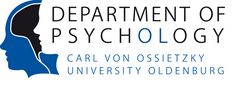History of AI
Artificial intelligence (AI) has evolved through a series of advances, beginning with neural networks in the 1960s. These networks mimicked the structure of the human brain, enabling computers to learn from data and perform tasks such as pattern recognition and classification.
Machine learning emerged in the 1980s, introducing algorithms that could learn from data without explicit programming. This led to significant advances in areas such as natural language processing (NLP) and computer vision.
Deep learning, a subset of machine learning, gained prominence in the 2010s. It uses multi-layered artificial neural networks, enabling more complex tasks and improved performance.
Generative AI
Generative AI takes the next step by enabling computers to create new content. It does this by training models on massive amounts of data, allowing them to learn patterns and generate similar results.
Transformer, a breakthrough architecture in NLP, paved the way for generative AI by enabling models to capture long-range dependencies in language. When combined with deep learning, Transformer-based models can generate human-quality text, translate languages, and write various types of creative content.
Artificial General Intelligence (AGI)
Artificial General Intelligence (AGI) is basically human-level intelligence, but for machines. Unlike today's AI, which excels at specific tasks (like playing chess or recognizing faces), AGI would be able to tackle a wide range of intellectual challenges and learn new things on its own. It is the future direction of AI development, however, it's still theoretical for now.
As an intuitive example, current AI can be compared to a super-powered calculator, excelling at number-crunching but lacking versatility. AGI would be more like a human, able to apply its knowledge in many different situations.
That's where generative AI comes in. It's an area of AI that's particularly good at creating new things, like art or music. It's a stepping stone to AGI because it shows that machines can learn and be creative, both of which are crucial for general intelligence. Note that the key term here is ‘creative thinking’ by machines.
So while we don't have AGI yet, the advances in generative AI and other areas are paving the way for its development. It's a work in progress, and as AI becomes more sophisticated, we may be able to work with artificial general intelligence in the future.

